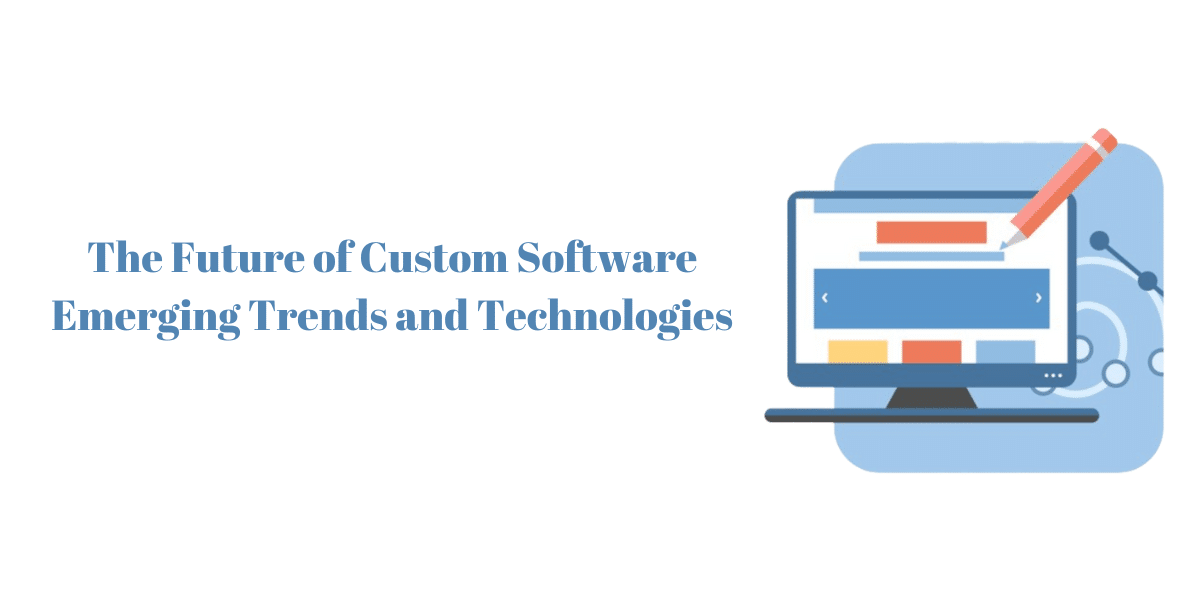In the rapidly evolving landscape of Software as a Service (SaaS), the integration of DevOps practices has emerged as a transformative force, revolutionizing the speed, efficiency, and quality of product development. DevOps, an amalgamation of Development and Operations, introduces a collaborative approach that breaks down traditional silos between these two critical facets of software engineering. This paradigm shift aims to accelerate the delivery of SaaS products by fostering continuous integration, automation, and seamless collaboration across cross-functional teams.
As organizations strive to meet the increasing demands of users in a competitive digital marketplace, understanding the profound impact of DevOps on SaaS development becomes imperative. This introduction sets the stage for a comprehensive exploration of the key principles, tools, and strategies that constitute the intersection of DevOps and SaaS. By delving into this symbiotic relationship, we uncover how DevOps not only expedites the development lifecycle but also enhances scalability, security, and overall product quality, positioning SaaS companies at the forefront of innovation and customer satisfaction.
Evolution of SaaS Product Development
The evolution of SaaS product development has undergone a profound transformation, reshaping the traditional paradigms of software creation and delivery. In the early stages of the SaaS era, development processes were often characterized by lengthy release cycles, siloed teams, and a rigid waterfall methodology. However, as the demand for faster, more agile solutions grew, the industry recognized the need for a paradigm shift, paving the way for the integration of DevOps principles.
Initially, SaaS development faced challenges in terms of scalability, deployment speed, and collaboration between development and operations teams. Recognizing these hurdles, the industry embraced agile methodologies, which laid the groundwork for the subsequent evolution towards DevOps practices. The shift towards agile methodologies fostered a culture of iterative development, where small, incremental updates could be delivered swiftly, enhancing responsiveness to user feedback.
The introduction of DevOps marked a pivotal moment in the evolution of SaaS product development. DevOps bridged the gap between development and operations, advocating for continuous integration, automation, and collaboration. This holistic approach addressed the limitations of earlier models by promoting a seamless, end-to-end workflow that accelerated the delivery of high-quality SaaS products. Consequently, organizations witnessed a reduction in time-to-market, improved scalability, and enhanced collaboration between cross-functional teams, thereby shaping the modern landscape of SaaS development into a dynamic, responsive, and customer-centric ecosystem. The ongoing evolution continues to be shaped by technological advancements, industry trends, and the ever-growing emphasis on delivering innovative, user-centric solutions in a competitive digital landscape.
Key Principles of DevOps in SaaS
The implementation of DevOps principles in Software as a Service (SaaS) development constitutes a paradigm shift that fundamentally alters the approach to software creation and delivery. At its core, DevOps emphasizes collaboration, communication, and integration between development and operations teams to streamline the entire software development lifecycle. One key principle lies in fostering a cultural shift, encouraging a shared responsibility for both development and operations personnel. This cultural transformation promotes a collective ownership mindset, breaking down traditional silos and fostering a collaborative environment where teams work seamlessly towards common goals.
Automation is another cornerstone principle of DevOps in SaaS. By automating repetitive tasks, such as testing, deployment, and infrastructure provisioning, organizations reduce manual errors, enhance efficiency, and achieve consistent, reproducible results. Continuous integration and continuous delivery (CI/CD) are integral components of automation, facilitating the rapid and reliable release of software updates. Through these practices, development and operations teams can collaborate more effectively, allowing for quicker identification and resolution of issues.
Furthermore, a focus on continuous monitoring and feedback loops is paramount in DevOps for SaaS. Real-time monitoring enables teams to detect and address performance issues promptly, ensuring a seamless user experience. Feedback loops, both internal and external, contribute to an iterative improvement process, allowing teams to adapt and optimize their strategies based on user insights and changing market dynamics. Overall, the key principles of DevOps in SaaS development underscore the importance of collaboration, automation, and continuous improvement as the foundational elements for achieving agility, speed, and high-quality software delivery in the dynamic landscape of SaaS development.
Streamlining Collaboration with DevOps Practices
The integration of DevOps practices plays a pivotal role in streamlining collaboration within Software as a Service (SaaS) development environments. Traditionally, development and operations teams operated as distinct entities with limited communication, leading to inefficiencies and delays. DevOps introduces a cultural shift by fostering a collaborative mindset and breaking down silos between these traditionally separate teams. This cultural transformation emphasizes shared goals, responsibilities, and communication channels, creating an environment where developers and operations personnel work collaboratively throughout the entire software development lifecycle.
One key aspect of streamlining collaboration in DevOps is the adoption of cross-functional teams. By bringing together individuals with diverse skill sets – including developers, operations professionals, and quality assurance experts – organizations ensure a holistic approach to problem-solving and project execution. This collaborative effort minimizes handovers, accelerates decision-making processes, and enhances overall efficiency. Moreover, DevOps encourages the use of collaborative tools and platforms, facilitating real-time communication and information sharing among team members, regardless of their geographical locations.
Automation is another critical element in the collaboration-enhancing arsenal of DevOps. Through the automation of repetitive tasks, such as testing and deployment, teams reduce manual errors and free up valuable time for more strategic and creative endeavors. Continuous integration and continuous delivery (CI/CD) pipelines further enhance collaboration by providing a structured and automated approach to software delivery. In essence, DevOps practices act as a catalyst for improved collaboration within SaaS development, creating an environment where agility, innovation, and efficiency thrive through the collective efforts of cross-functional teams working in harmony.
Continuous Integration and SaaS Development
Continuous Integration (CI) stands as a cornerstone in the realm of Software as a Service (SaaS) development, significantly impacting the efficiency, reliability, and speed of the software delivery process. CI is a DevOps practice that involves the frequent and automated integration of code changes from multiple contributors into a shared repository. In the context of SaaS, where rapid and agile development is paramount, CI plays a pivotal role in ensuring the seamless collaboration of cross-functional teams.
CI in SaaS development involves the regular integration of code changes, accompanied by automated build and testing processes. This approach allows development teams to identify and rectify integration issues early in the development cycle, promoting a more stable and robust codebase. Automated testing, another crucial component of CI, ensures that new code changes do not introduce regressions or break existing functionality. This continuous validation enhances the overall quality of the SaaS product and reduces the likelihood of post-release defects.
The integration of CI in SaaS development contributes significantly to achieving faster time-to-market for new features and updates. By automating the integration and testing processes, development teams can accelerate the delivery of reliable and validated code. Additionally, CI sets the stage for Continuous Delivery (CD), where validated code changes are automatically deployed to production environments. This streamlined approach not only expedites the development lifecycle but also enhances the overall agility of SaaS development, enabling organizations to respond rapidly to evolving customer needs and market demands. In essence, Continuous Integration is a pivotal practice in SaaS development, fostering a culture of collaboration, quality, and accelerated innovation.
Automating Deployment Pipelines for SaaS Products
Automating deployment pipelines is a critical facet of advancing Software as a Service (SaaS) product development, revolutionizing the way software is released and ensuring a more efficient, reliable, and scalable process. Deployment pipelines encompass the sequence of automated steps from code integration to the delivery of a fully functional product. In the context of SaaS, where rapid and frequent releases are common, automating deployment pipelines becomes instrumental in achieving agility and maintaining product stability.
Automation of deployment pipelines in SaaS development involves scripting and orchestrating various stages, including code integration, testing, and deployment. Continuous Deployment (CD) practices, a natural extension of Continuous Integration (CI), automate the release process to production environments once code changes pass predefined tests. This automation not only reduces the manual effort required for deployments but also minimizes the risk of human errors, ensuring a consistent and repeatable release process.
The advantages of automating deployment pipelines for SaaS products are multifold. Firstly, it significantly accelerates the time-to-market for new features or bug fixes, allowing organizations to respond promptly to user needs and market trends. Secondly, it enhances the overall reliability of deployments by eliminating the variability associated with manual processes. Automated pipelines provide a standardized and repeatable approach, reducing the likelihood of deployment-related issues. Thirdly, automation allows for more frequent releases without compromising product stability, fostering a continuous delivery model that aligns with the dynamic demands of the SaaS software development landscape. In essence, automating deployment pipelines is pivotal for SaaS development, providing a robust framework for rapid, reliable, and scalable product releases.
Enhancing Code Quality through DevOps Techniques
Enhancing code quality through the implementation of DevOps techniques is a fundamental aspect of elevating SaaS product development. DevOps integrates development and operations teams, fostering collaboration and introducing practices that not only expedite delivery but also contribute to the overall improvement of code quality. Code quality encompasses various attributes such as reliability, maintainability, and performance, all of which are critical in ensuring a robust and efficient SaaS application.
One key DevOps technique for enhancing code quality is continuous integration (CI), which involves the automated and frequent integration of code changes. CI not only detects integration issues early in the development process but also encourages the use of automated testing, ensuring that new code adheres to predefined quality standards. Automated testing, including unit tests, integration tests, and end-to-end tests, plays a crucial role in identifying bugs, regressions, or vulnerabilities, contributing to the creation of high-quality code.
Continuous code inspection is another DevOps technique that focuses on regularly reviewing and analyzing code for adherence to coding standards, best practices, and potential security vulnerabilities. By incorporating automated code analysis tools into the development pipeline, organizations can maintain a consistent level of code quality and identify areas for improvement.
Moreover, the implementation of version control systems, another DevOps best practice, ensures that code changes are tracked, managed, and documented effectively. This not only facilitates collaboration among development teams but also provides a historical record of changes, aiding in troubleshooting and auditing.
In summary, DevOps techniques contribute significantly to enhancing code quality in SaaS development by promoting continuous integration, automated testing, code inspection, and robust version control practices. These methodologies collectively foster a culture of quality assurance and improvement, ensuring that SaaS products are not only delivered rapidly but also meet the highest standards of reliability and performance.
Real-time Monitoring and DevOps in SaaS Environments
Real-time monitoring stands as a pivotal component in the symbiotic relationship between DevOps practices and Software as a Service (SaaS) environments, providing critical insights and ensuring the continuous health and performance of SaaS applications. DevOps emphasizes a holistic approach to software development and delivery, and real-time monitoring aligns seamlessly with these principles by offering visibility into various facets of the application’s infrastructure, user experience, and overall performance.
In SaaS environments, where user satisfaction is paramount, real-time monitoring enables proactive identification and resolution of issues. DevOps teams leverage monitoring tools to gather and analyze data on application response times, system resource utilization, error rates, and other key performance indicators. This real-time data empowers teams to detect anomalies promptly, allowing for swift intervention and minimizing potential disruptions to users.
The integration of real-time monitoring into the DevOps workflow enhances the feedback loop, providing actionable insights for continuous improvement. DevOps teams can leverage monitoring data to optimize resource allocation, identify and address bottlenecks in the application architecture, and make data-driven decisions for capacity planning.
Furthermore, real-time monitoring supports the principles of continuous integration and continuous delivery (CI/CD) by enabling rapid feedback on the impact of code changes. DevOps teams can assess the performance implications of new features or updates in real time, ensuring that changes align with predefined performance benchmarks before reaching production environments.
In essence, real-time monitoring is a linchpin in the DevOps-driven evolution of SaaS software environments, facilitating proactive problem resolution, optimizing performance, and providing the necessary insights for continuous refinement and innovation in the dynamic landscape of SaaS development.
Scalability and DevOps in SaaS Product Scaling
The intersection of scalability and DevOps is integral to the effective and efficient scaling of Software as a Service (SaaS) products. Scalability in the context of SaaS refers to the ability of an application or system to handle an increasing workload, user base, or data volume without compromising performance. DevOps practices play a crucial role in achieving scalability by fostering a culture of automation, collaboration, and continuous improvement throughout the SaaS product development lifecycle.
DevOps practices facilitate scalability in SaaS by automating processes related to infrastructure provisioning, deployment, and monitoring. Automated scaling mechanisms, such as auto-scaling groups and dynamic resource allocation, enable SaaS applications to adapt to fluctuating workloads seamlessly. This ensures optimal resource utilization, preventing over-provisioning and minimizing costs while maintaining a responsive user experience.
Moreover, DevOps emphasizes the use of cloud-native technologies and architectures, aligning with the scalability requirements of SaaS products. Cloud platforms offer elastic resources and services that can be dynamically adjusted based on demand, allowing SaaS applications to scale horizontally to accommodate growing user bases and increasing data volumes.
Continuous monitoring, a key DevOps practice, is vital for ensuring the scalability of SaaS products. Real-time insights into application performance, resource utilization, and user interactions empower DevOps teams to identify scalability bottlenecks and proactively address them. By leveraging monitoring data, teams can optimize application components, refine infrastructure configurations, and implement scaling strategies that align with the evolving needs of the SaaS ecosystem.
In summary, the integration of DevOps practices is instrumental in achieving scalability for SaaS products. Automation, cloud-native approaches, and continuous monitoring collectively empower SaaS development teams to scale their products efficiently, providing a foundation for growth, resilience, and a superior user experience.
Cross-functional Teams and Agile DevOps in SaaS
The integration of cross-functional teams and Agile DevOps methodologies is a transformative approach that significantly influences the development and delivery of Software as a Service (SaaS) products. Cross-functional teams bring together individuals with diverse skill sets, including developers, operations personnel, testers, and other specialists, fostering a collaborative and holistic approach to SaaS development. This collaborative environment is a core tenet of Agile DevOps, where the traditional silos between development and operations are dismantled to promote seamless communication, shared goals, and rapid adaptation to evolving requirements.
In the context of SaaS, where agility and responsiveness are paramount, cross-functional teams enhance the ability to deliver high-quality products efficiently. Agile DevOps principles, coupled with cross-functional collaboration, facilitate the iterative and incremental development of SaaS features. This approach enables teams to respond promptly to user feedback, market trends, and changing priorities, ensuring that SaaS products remain competitive and aligned with customer expectations.
Cross-functional teams in Agile DevOps are empowered to take end-to-end ownership of the entire development lifecycle, from code creation to deployment and monitoring. This ownership fosters a sense of accountability, innovation, and continuous improvement within the team. Moreover, the iterative nature of Agile DevOps allows cross-functional teams to adapt and refine their strategies in real time, enhancing the overall flexibility and resilience of SaaS development processes.
In essence, the collaboration between cross-functional teams and Agile DevOps methodologies is a potent combination for achieving agility, efficiency, and innovation in SaaS development. This approach not only accelerates time-to-market for new features but also ensures that SaaS products are developed and delivered with a customer-centric focus, aligning with the dynamic demands of the competitive SaaS landscape.
Improving Release Management in SaaS with DevOps
Improving release management in Software as a Service (SaaS) with DevOps practices represents a paradigm shift that enhances the efficiency, reliability, and agility of the entire software delivery process. Release management in SaaS involves coordinating the planning, testing, deployment, and monitoring of software updates to ensure a seamless experience for end-users. DevOps principles, emphasizing collaboration and automation, introduce transformative changes to traditional release management approaches, aligning them with the dynamic requirements of SaaS development.
One key aspect of improving release management in SaaS with DevOps is the adoption of continuous integration and continuous delivery (CI/CD) pipelines. CI/CD automates the process of code integration, testing, and deployment, enabling organizations to release new features or updates rapidly and consistently. Automated pipelines reduce manual intervention, minimize errors, and provide a streamlined mechanism for delivering high-quality software.
DevOps further contributes to release management by fostering collaboration between development, operations, and quality assurance teams. Cross-functional collaboration ensures that each release undergoes rigorous testing and validation, reducing the likelihood of post-release defects. The automation of testing and deployment processes not only accelerates the release cycle but also provides the flexibility to roll back changes quickly in the event of unforeseen issues, ensuring a more resilient release management process.
Continuous monitoring, another DevOps practice, plays a crucial role in post-release management. Real-time insights into application performance and user interactions allow organizations to proactively address issues, optimize resource utilization, and iterate on subsequent releases. Overall, improving release management in SaaS with DevOps establishes a foundation for delivering reliable, feature-rich software to users, fostering innovation, and maintaining a competitive edge in the dynamic SaaS landscape.
Security Integration in DevOps for SaaS Applications
Security integration in the context of DevOps for Software as a Service (SaaS) applications is a critical imperative, aligning security practices with the agility and efficiency inherent in the DevOps methodology. Traditionally, security measures were often perceived as obstacles in the fast-paced world of SaaS development, but the incorporation of security into the DevOps pipeline ensures that security is not just a checkpoint but an integral part of the entire software development lifecycle.
DevSecOps, an extension of DevOps, promotes a cultural shift towards a shared responsibility for security among development, operations, and security teams. By embedding security practices within the DevOps workflow, organizations can proactively address potential vulnerabilities and threats throughout the development process. This collaborative approach ensures that security considerations are not an afterthought but are woven into every stage, from code creation to deployment.
Automation is a key enabler of security integration in DevOps for SaaS applications. Automated security testing, vulnerability scanning, and code analysis tools can be seamlessly integrated into the continuous integration and continuous delivery (CI/CD) pipelines. This ensures that security checks are conducted consistently and efficiently with each code change, identifying and remedying security issues early in the development cycle.
Moreover, the implementation of Infrastructure as Code (IaC) principles in DevOps allows for the consistent and secure provisioning of infrastructure. Security policies can be codified, and infrastructure configurations can be automatically validated, reducing the risk of misconfigurations and vulnerabilities in the production environment.
In summary, security integration in DevOps for SaaS applications is an essential strategy for maintaining the integrity and resilience of software in the face of evolving threats. By fostering a culture of shared responsibility and leveraging automated security measures, organizations can achieve a harmonious balance between speed and security, ensuring that SaaS products are not only innovative and rapidly delivered but also robust and secure.
DevOps Tools Transforming SaaS Development
DevOps tools play a transformative role in shaping the landscape of Software as a Service (SaaS) development, providing automation, collaboration, and efficiency across the entire development lifecycle. Continuous Integration (CI) and Continuous Delivery (CD) tools are at the forefront of this transformation, automating the building, testing, and deployment processes. Popular CI/CD tools like Jenkins, Travis CI, and GitLab CI streamline code integration and delivery, allowing SaaS development teams to release software updates rapidly and reliably.
Configuration Management tools, such as Ansible, Chef, and Puppet, contribute to the standardization and automation of infrastructure provisioning. These tools enable the codification of infrastructure configurations, ensuring consistency across development, testing, and production environments. Infrastructure as Code (IaC) principles, facilitated by these tools, enhance scalability and reduce the likelihood of configuration errors in SaaS applications.
Containerization tools, exemplified by Docker and Kubernetes, revolutionize the deployment and management of SaaS applications. Containers encapsulate applications and their dependencies, ensuring consistency and portability across various environments. Kubernetes, as an orchestration tool, simplifies the deployment and scaling of containerized applications, offering flexibility and efficiency in managing complex SaaS infrastructures.
Collaboration and communication tools, such as Slack and Microsoft Teams, enhance cross-functional team interaction. These tools facilitate real-time communication, file sharing, and collaboration, promoting seamless coordination between development, operations, and other stakeholders.
Security tools like SonarQube and OWASP Zap contribute to secure coding practices and vulnerability scanning. These tools integrate security checks into the development pipeline, identifying and mitigating potential security risks early in the SaaS development process.
In conclusion, the array of DevOps tools available today plays a pivotal role in transforming SaaS development, automating workflows, enhancing collaboration, and ensuring the scalability, security, and efficiency of SaaS applications.
Role of Continuous Testing in SaaS DevOps
Continuous testing holds a crucial and central role in the realm of Software as a Service (SaaS) DevOps, contributing to the efficiency, reliability, and overall quality of the software development lifecycle. In the context of SaaS, where rapid and iterative development is paramount, continuous testing becomes a linchpin in ensuring that each code change or new feature is thoroughly validated before reaching production.
The primary goal of continuous testing in SaaS DevOps is to provide rapid feedback on the quality of code throughout the development process. This involves the integration of automated testing practices into the continuous integration and continuous delivery (CI/CD) pipelines. Automated testing tools, encompassing unit tests, integration tests, and end-to-end tests, systematically evaluate the functionality and performance of the application at each stage of development. By automating these testing processes, development teams can quickly identify and address defects, regressions, or performance issues, ensuring that the software remains stable and reliable.
Continuous testing is particularly vital in SaaS environments due to the dynamic nature of cloud-based applications and the necessity for frequent updates. Automated testing allows for the swift validation of new features and changes, enabling development teams to release updates more confidently and with reduced risk. Moreover, as SaaS applications often cater to a diverse user base with varying requirements, continuous testing helps ensure that software modifications do not adversely impact user experience or introduce unintended consequences.
In essence, the role of continuous testing in SaaS DevOps is pivotal, serving as a critical component for achieving faster time-to-market, maintaining product stability, and fostering a culture of quality assurance throughout the entire SaaS development lifecycle.
Achieving Faster Time-to-Market with DevOps
Achieving faster time-to-market stands as a primary and transformative outcome of implementing DevOps practices in the realm of Software as a Service (SaaS) development. DevOps, as a cultural and technological approach, emphasizes collaboration, automation, and continuous integration across the entire software development lifecycle, expediting the delivery of high-quality products to end-users.
DevOps achieves faster time-to-market through the seamless integration of development and operations processes. Automation is a key enabler in this regard, with continuous integration and continuous delivery (CI/CD) pipelines automating code integration, testing, and deployment. These automated pipelines eliminate manual bottlenecks and significantly reduce the time it takes to release new features or updates. The continuous and automated nature of the CI/CD pipeline ensures that development teams can quickly adapt to changing requirements, fix bugs promptly, and deliver software increments rapidly.
Collaboration within cross-functional teams is another critical aspect of DevOps that contributes to accelerated time-to-market. By fostering a culture of communication and shared responsibility, DevOps breaks down traditional silos between development, operations, and other stakeholders. This collaboration allows teams to work seamlessly, share insights, and collectively address challenges, resulting in faster decision-making and problem resolution.
Furthermore, DevOps encourages the use of cloud-native technologies and infrastructure as code (IaC), providing scalable and flexible environments for SaaS development. Cloud platforms enable rapid provisioning of resources, facilitating quick testing and deployment of software in diverse environments.
In conclusion, the implementation of DevOps principles in SaaS development accelerates time-to-market by automating processes, fostering collaboration, and embracing cloud-native technologies. This approach positions organizations to respond swiftly to market demands, innovate efficiently, and maintain a competitive edge in the dynamic landscape of SaaS.
User Experience Enhancement through DevOps Practices
User experience enhancement is a paramount objective in Software as a Service (SaaS) development, and DevOps practices play a pivotal role in achieving this goal. DevOps, with its emphasis on collaboration, automation, and continuous improvement, directly impacts user experience by fostering a dynamic and responsive development environment.
DevOps practices contribute to user experience enhancement through rapid and iterative development cycles facilitated by continuous integration and continuous delivery (CI/CD) pipelines. These automated pipelines enable development teams to deliver updates and new features more frequently and reliably, ensuring that users have access to improvements and innovations without prolonged wait times. This agility is essential in responding to user feedback promptly and aligning the product with evolving user expectations.
Real-time monitoring, a key DevOps practice, is instrumental in proactively identifying and addressing performance issues that could impact user experience. Monitoring tools provide insights into application performance, allowing development and operations teams to detect anomalies, bottlenecks, or errors in real time. This information enables quick remediation efforts, ensuring a smooth and uninterrupted user experience.
Additionally, the collaboration between development and operations teams, encouraged by the DevOps culture, facilitates a holistic approach to user experience. By breaking down traditional silos, DevOps ensures that both development and operations perspectives contribute to the optimization of performance, reliability, and responsiveness, collectively enhancing the overall user experience.
In summary, DevOps practices directly contribute to user experience enhancement in SaaS product development by enabling rapid releases, proactively addressing performance issues, and fostering collaboration between cross-functional teams. This approach aligns with the user-centric focus of SaaS applications, ensuring that end-users receive an efficient, reliable, and satisfying experience with each iteration of the product.
Cost Optimization in SaaS Development with DevOps
Cost optimization in Software as a Service (SaaS) development is a critical consideration, and DevOps practices emerge as a strategic approach to achieve efficiency, resource utilization, and overall financial benefits. DevOps not only enhances the speed and quality of software delivery but also contributes significantly to cost-effectiveness throughout the development lifecycle.
One key aspect of cost optimization with DevOps lies in the automation of repetitive and resource-intensive tasks. Continuous integration and continuous delivery (CI/CD) pipelines automate processes such as code integration, testing, and deployment, reducing the manual effort required and minimizing the risk of human errors. This automation not only accelerates time-to-market but also optimizes human resources, allowing teams to focus on more strategic and value-added activities.
The scalability inherent in DevOps practices further supports cost optimization in SaaS development. Cloud-native technologies and infrastructure as code (IaC) enable organizations to scale resources up or down based on demand, avoiding unnecessary costs associated with over-provisioning. Cloud platforms provide flexibility in resource allocation, allowing development teams to adapt quickly to changing requirements and optimizing costs accordingly.
Moreover, the collaborative nature of DevOps fosters cross-functional teamwork, breaking down traditional silos between development and operations. This collaboration ensures that the entire team is aligned with cost-saving initiatives, implementing best practices for efficient resource utilization and budgetary considerations.
In essence, cost optimization in SaaS development with DevOps involves the strategic use of automation, scalability, and collaborative practices to streamline processes, reduce operational overheads, and align resource utilization with actual demand. This approach not only enhances the financial efficiency of SaaS development but also ensures a sustainable and competitive edge in a dynamic marketplace.
Learning from DevOps Failures in SaaS Projects
Learning from DevOps failures in Software as a Service (SaaS) projects is crucial for fostering a culture of continuous improvement and resilience. Despite the numerous advantages that DevOps brings to SaaS development, failures provide valuable insights that contribute to refining processes, enhancing collaboration, and fortifying the overall reliability of software delivery.
One common area of failure in DevOps for SaaS lies in inadequate communication and collaboration among cross-functional teams. DevOps emphasizes a culture of shared responsibility, but breakdowns in communication between development, operations, and other stakeholders can lead to misunderstandings, delays, and ultimately, project failures. Learning from such failures involves reinforcing communication channels, encouraging transparency, and establishing clear expectations to ensure seamless collaboration across teams.
Insufficient or ineffective automation is another area where DevOps failures may occur in SaaS projects. Automation is a core tenet of DevOps, and failures related to automation may include inadequately tested scripts, configuration errors, or incomplete coverage of deployment processes. Learning from these failures involves implementing robust testing practices for automation scripts, ensuring comprehensive coverage, and regularly reviewing and updating automation processes.
Moreover, learning from DevOps failures requires organizations to adopt a blame-free culture. Failures should be seen as opportunities for improvement rather than occasions for assigning blame. This cultural shift encourages open communication about mistakes, facilitates root cause analysis, and enables the implementation of preventive measures to avoid similar failures in the future.
In conclusion, learning from DevOps failures in SaaS projects is essential for promoting resilience, innovation, and continuous improvement. By addressing communication gaps, enhancing automation practices, and fostering a blame-free culture, organizations can leverage failures as valuable learning experiences to fortify their DevOps practices and optimize the delivery of high-quality SaaS products.
DevOps Impact on SaaS Product Lifecycle
DevOps exerts a profound impact on the entire Software as a Service (SaaS) product lifecycle, ushering in a paradigm shift that enhances collaboration, accelerates delivery, and ensures continuous improvement. Beginning with the initial phases of ideation and development, DevOps principles reshape the product lifecycle by fostering a culture of collaboration between traditionally siloed development and operations teams. This collaborative approach ensures that considerations related to deployment, scalability, and maintenance are integrated into the development process from the outset, streamlining the transition from development to production.
In the context of continuous integration and continuous delivery (CI/CD), DevOps accelerates the release and deployment phases of the SaaS product lifecycle. Automation plays a pivotal role, automating code integration, testing, and deployment processes, thereby reducing manual errors and enabling swift and reliable releases. This acceleration contributes to faster time-to-market for new features and updates, allowing SaaS providers to respond promptly to evolving user needs and market trends.
Furthermore, DevOps practices extend their impact into the operational and maintenance phases of the SaaS product lifecycle. Continuous monitoring ensures real-time visibility into application performance, allowing for proactive issue detection and resolution. This proactive approach enhances the overall reliability and user experience, minimizing downtime and disruptions.
In essence, the impact of DevOps on the SaaS product lifecycle is transformative, fostering collaboration, accelerating delivery, and promoting continuous improvement. By integrating development and operations seamlessly, DevOps optimizes the entire lifecycle, from ideation to deployment and ongoing maintenance, ensuring that SaaS products are not only innovative and rapidly delivered but also robust, scalable, and responsive to the dynamic demands of the digital marketplace.
Addressing Compliance Challenges in SaaS DevOps
Addressing compliance challenges in Software as a Service (SaaS) DevOps is a complex yet imperative task, as the dynamic and fast-paced nature of DevOps can sometimes pose challenges in meeting regulatory requirements and industry standards. Compliance considerations encompass a range of factors, including data security, privacy, and governance, which are critical in the SaaS landscape. One significant challenge is ensuring that DevOps practices align with data protection regulations, such as GDPR or HIPAA, depending on the nature of the SaaS application and the data it handles. This involves implementing security measures, access controls, and encryption protocols to safeguard sensitive information throughout the development and operational phases.
Continuous monitoring and auditing become essential components in addressing compliance challenges. DevOps teams must implement real-time monitoring tools to track and log activities, ensuring that any deviations from compliance standards are promptly detected and addressed. Regular audits help assess and validate the adherence of DevOps processes to compliance requirements, providing insights into areas that may need improvement.
Collaboration between development, operations, and compliance teams is vital in addressing these challenges. Establishing clear communication channels and fostering a shared responsibility for compliance ensures that compliance considerations are integrated into the entire DevOps lifecycle. Documentation and traceability of changes become crucial, enabling organizations to demonstrate compliance to auditors and regulatory authorities.
Ultimately, addressing compliance challenges in SaaS DevOps requires a holistic approach that combines technical measures, continuous monitoring, regular audits, and a collaborative culture. By integrating compliance considerations into the DevOps workflow, organizations can navigate the regulatory landscape effectively, ensuring that SaaS applications adhere to the necessary standards while maintaining the agility and innovation inherent in DevOps practices.
DevOps and Agile Methodologies in SaaS
DevOps and Agile custom software development methodologies converge seamlessly in the realm of Software as a Service (SaaS), providing a synergistic approach that optimizes the entire development lifecycle. Both DevOps and Agile share foundational principles centered around collaboration, iterative development, and customer-centricity, making them complementary strategies for delivering high-quality SaaS products efficiently.
Agile methodologies, with their emphasis on iterative development and continuous feedback, set the stage for the integration of DevOps practices. Agile’s iterative cycles align with the continuous integration and continuous delivery (CI/CD) pipelines inherent in DevOps, facilitating the rapid and reliable release of software updates. The collaboration fostered by Agile methodologies ensures that cross-functional teams work cohesively, promoting shared ownership of the product and facilitating the seamless integration of development and operations functions.
DevOps extends the Agile approach by introducing automation, continuous monitoring, and infrastructure as code (IaC) principles. Automation streamlines manual processes, enabling faster and more consistent deliveries, while continuous monitoring ensures real-time insights into application performance. Infrastructure as code aligns with Agile’s emphasis on flexibility, allowing teams to provision and manage infrastructure efficiently.
Together, DevOps and Agile methodologies enhance the agility, responsiveness, and collaboration within SaaS development teams. By combining Agile’s iterative development with DevOps’ automation and continuous delivery practices, organizations can deliver feature-rich, customer-centric SaaS products at an accelerated pace, ensuring that they remain competitive and responsive to evolving user needs in the fast-paced landscape of software development.
Collaboration between Development and Operations Teams
DevOps and Agile methodologies seamlessly converge within the Software as a Service (SaaS) domain, forming a synergistic approach that optimizes the entire development lifecycle. Both DevOps and Agile share foundational principles centered around collaboration, iterative development, and customer-centricity, creating a harmonious relationship for efficiently delivering high-quality SaaS products.
Agile methodologies serve as a catalyst for integrating DevOps practices, setting the groundwork for streamlined collaboration and continuous feedback. The iterative cycles intrinsic to Agile align seamlessly with the continuous integration and continuous delivery (CI/CD) pipelines of DevOps. This alignment facilitates the rapid and reliable release of software updates, enabling development teams to respond swiftly to changing requirements and user feedback. The collaborative ethos cultivated by Agile ensures that cross-functional teams operate cohesively, fostering shared ownership of the product and facilitating the smooth integration of development and operations functions.
DevOps extends the Agile approach by introducing automation, continuous monitoring, and Infrastructure as Code (IaC) principles. Automation enhances efficiency by streamlining manual processes, ensuring faster and more consistent deliveries. Continuous monitoring provides real-time insights into application performance, enabling proactive issue detection and resolution. Infrastructure as Code aligns with Agile’s flexibility emphasis, allowing teams to efficiently provision and manage infrastructure.
Together, DevOps and Agile methodologies amplify agility, responsiveness, and collaboration within SaaS development teams. The combination of Agile’s iterative development with DevOps’ automation and continuous delivery practices empowers organizations to deliver feature-rich, customer–centric SaaS products at an accelerated pace. This collaborative approach ensures competitiveness and responsiveness to evolving user needs in the dynamic landscape of software development.
Cloud-Native Architecture and DevOps in SaaS
Cloud-native architecture and DevOps intertwine seamlessly, forming a symbiotic relationship that shapes the landscape of Software as a Service (SaaS) development. Cloud-native architecture is characterized by its design principles and practices tailored for cloud environments, emphasizing scalability, flexibility, and resilience. When coupled with DevOps methodologies, this approach revolutionizes how SaaS products are built, deployed, and operated.
DevOps, with its focus on collaboration, automation, and continuous delivery, aligns naturally with the cloud-native ethos. The use of cloud services, such as Infrastructure as a Service (IaaS) and Platform as a Service (PaaS), empowers development teams to provision and manage resources dynamically, responding to varying workloads efficiently. DevOps practices, including continuous integration and continuous delivery (CI/CD), dovetail with cloud-native architecture to enable rapid and automated deployment of SaaS applications. This integration enhances the speed, reliability, and consistency of the development lifecycle.
Containerization technologies, exemplified by Docker, and orchestration tools like Kubernetes further augment the synergy between cloud-native architecture and DevOps in SaaS. Containers encapsulate applications and their dependencies, ensuring consistency across different environments. Kubernetes orchestrates the deployment, scaling, and management of these containers, providing agility and scalability. This combination allows SaaS development teams to achieve a high degree of portability, scalability, and efficiency in deploying and managing applications.
In summary, the amalgamation of cloud-native architecture and DevOps in SaaS development creates an environment where speed, scalability, and flexibility converge. This collaboration enables organizations to harness the full potential of cloud technologies, delivering innovative and resilient SaaS products that meet the dynamic demands of the digital landscape.
Future Trends: DevOps Evolution in SaaS Development
The evolution of DevOps in Software as a Service (SaaS) development is marked by several future trends that promise to shape the landscape and propel the industry forward. One prominent trend is the increasing integration of Artificial Intelligence (AI) and Machine Learning (ML) into DevOps processes. AI and ML technologies are being leveraged to enhance automation, predictive analytics, and intelligent decision-making within the DevOps pipeline. This integration aims to optimize release management, identify patterns in application performance, and automate routine tasks, ultimately contributing to faster, more efficient SaaS development.
Another significant trend is the growing emphasis on DevSecOps, where security considerations are embedded throughout the entire SaaS development lifecycle. With the rising importance of data security and privacy, integrating security practices into DevOps becomes crucial. DevSecOps incorporates security measures from the initial stages of development, ensuring that security is not an afterthought but an integral part of the entire process. This trend aligns with the evolving regulatory landscape and the increasing need for robust security postures in SaaS applications.
Furthermore, the evolution of DevOps in SaaS development involves the continued adoption of serverless architectures. Serverless computing abstracts infrastructure management, allowing developers to focus solely on code. This trend reduces operational overhead, enhances scalability, and accelerates development cycles, contributing to the efficiency and agility of SaaS product delivery.
In conclusion, the future trends in DevOps for SaaS development point towards an era of increased intelligence, heightened security integration, and the widespread adoption of serverless architectures. These trends collectively represent a strategic evolution that addresses the evolving needs of the digital landscape, ensuring that SaaS development remains innovative, secure, and responsive to emerging challenges.
The Key Takeaway
In conclusion, the evolution of DevOps in Software as a Service (SaaS) development signifies a transformative journey characterized by collaboration, automation, and continuous improvement. The seamless integration of DevOps and Agile methodologies fosters an environment where cross-functional teams deliver high-quality SaaS products with increased efficiency and responsiveness.
As organizations embrace cloud-native architectures, leverage artificial intelligence, and prioritize security through DevSecOps, the future trends in DevOps promise to redefine the SaaS development landscape. The emphasis on serverless computing further exemplifies a shift towards streamlined operations and enhanced scalability.
With these trends, SaaS development is poised to meet the evolving demands of a dynamic digital ecosystem, ensuring not only rapid innovation but also robust security and resilience in the face of emerging challenges. The future of DevOps in SaaS development holds the promise of a more intelligent, secure, and agile approach to delivering cutting-edge software solutions.











